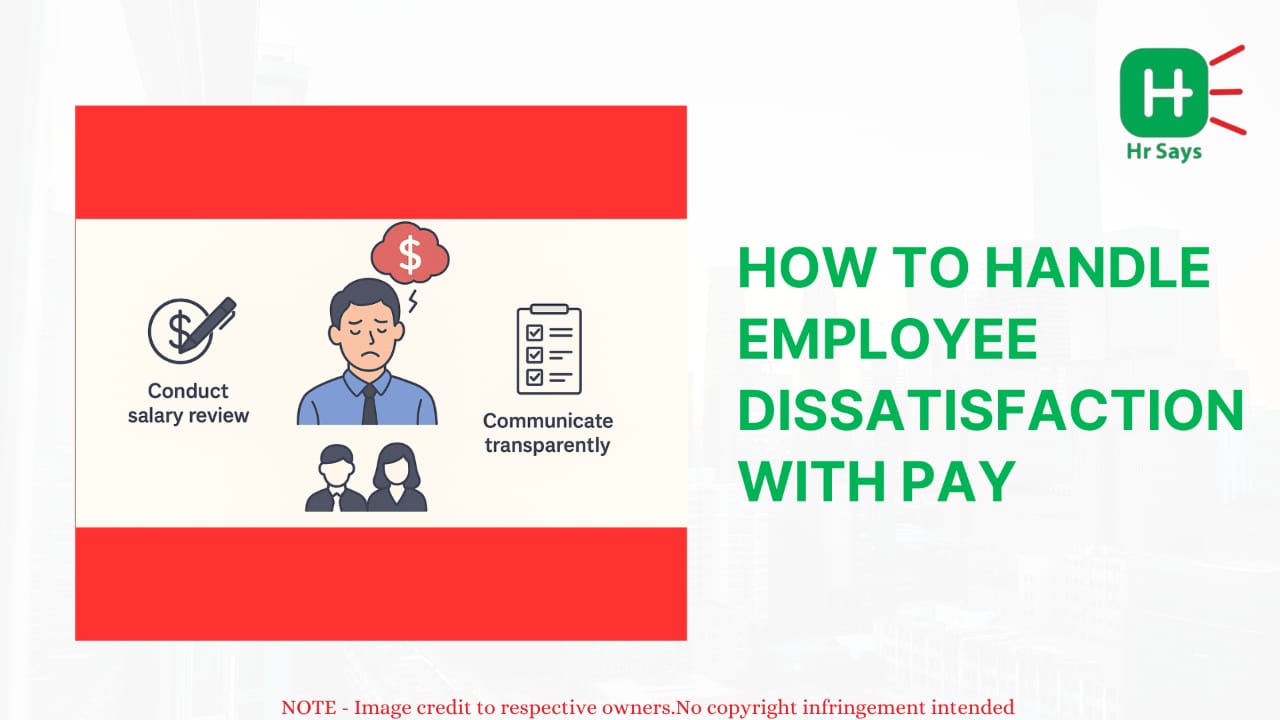Have you ever observed how dissatisfaction with pay devours the morale in the workplace? It is among the most frequent and sensitive problems that any employer has to deal with. Underpayment and underestimation of employees lead to the deterioration of productivity, loyalty, and engagement. A balance and empathetic approach can be the solution.
Understanding the Root Cause
It is essential to find out what is really causing the discontent before acting. It is not always only the number of dollars on the package, but about equality, appreciation, or even the absence of visibility in the pay system.
Common causes include:
● Pay inequity compared to peers or competitors
● Lack of performance-based incentives
● Limited career growth opportunities
● Unclear compensation policies
When employees perceive pay disparities, frustration grows. Employers need to recognize that dissatisfaction often signals a deeper disconnect between effort and reward.
Open and Honest Communication
When dissatisfaction surfaces, silence is the worst response. Employers should create safe spaces where employees can voice their concerns freely. Listening actively and showing empathy builds trust. A well-handled conversation can prevent a resignation or an internal crisis. A few practices to follow:
● Conduct regular one-on-one meetings to discuss expectations
● Maintain transparency about compensation reviews
● Encourage employees to share their views respectfully
● Avoid defensive responses and focus on understanding their perspective
A genuine discussion helps employees feel heard, even if an immediate salary revision isn’t possible.
Reviewing the Pay Structure
If dissatisfaction becomes common, the compensation strategy might need reevaluation. Benchmarking pay against market standards ensures fairness. HR teams should conduct periodic salary audits to align pay scales with industry norms.
Employers can consider:
● Market-based salary adjustments to stay competitive
● Pay-for-performance models to reward productivity
● Non-monetary benefits such as flexible hours, wellness programs, or training support
A well-balanced pay structure combines fair compensation with tangible growth opportunities, helping employees feel valued beyond just their paycheck.
Recognizing and Rewarding Effort
Recognition often bridges the emotional gap that money can’t fill. Regular appreciation, team acknowledgments, and visible reward systems can strengthen motivation. Small gestures like employee-of-the-month awards or public recognition can uplift morale.
Employees who feel seen and appreciated are more likely to stay committed, even if pay increases are gradual.
Building Long-Term Pay Satisfaction
Pay satisfaction isn’t achieved overnight. It requires consistent communication, clear policies, and a culture that values fairness. Employers should focus on building trust, transparency, and equity in every aspect of compensation.
Key steps include:
● Reviewing pay policies annually
● Linking salary increments to measurable performance
● Keeping employees informed about financial decisions that affect pay
When employees understand how pay decisions are made, resentment decreases and engagement improves.
Conclusion
Handling employee dissatisfaction with pay takes patience and strategy. It’s not just about raising salaries but about showing fairness, recognition, and respect. Employers who combine open communication with transparent pay practices build teams that trust and perform better.

 Employee dissatisfaction with pay can disrupt workplace harmony. Understanding root causes,
promoting transparency, and aligning compensation with performance can help employers
maintain fairness, motivation, and long-term satisfaction.
Employee dissatisfaction with pay can disrupt workplace harmony. Understanding root causes,
promoting transparency, and aligning compensation with performance can help employers
maintain fairness, motivation, and long-term satisfaction.












.jpeg)












.jpeg)